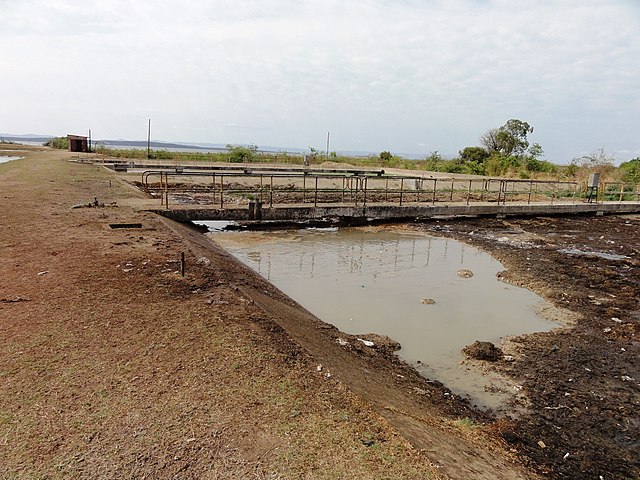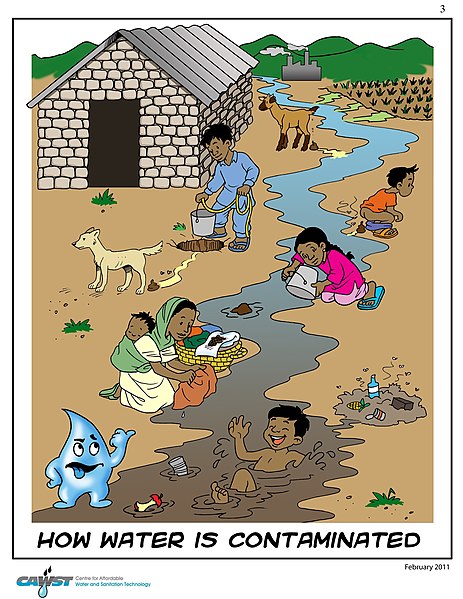Waste stabilization ponds are ponds designed and built for wastewater treatment to reduce the organic content and remove pathogens from wastewater. They are man-made depressions confined by earthen structures. Wastewater or "influent" enters on one side of the waste stabilization pond and exits on the other side as "effluent", after spending several days in the pond, during which treatment processes take place.
Waste stabilization pond at Grand Agadir, Morocco (Station M’zar)
Effluent from a high rate algae pond and two maturation ponds in Attaouia, Morocco. Note the green color, caused by algae.
A poorly maintained anaerobic treatment pond in Kariba, Zimbabwe (sludge needs to be removed)
Main configurations of waste stabilization pond systems
Water pollution is the contamination of water bodies, usually as a result of human activities, that has a negative impact on their uses. Water bodies include lakes, rivers, oceans, aquifers, reservoirs and groundwater. Water pollution results when contaminants mix with these water bodies. Contaminants can come from one of four main sources: sewage discharges, industrial activities, agricultural activities, and urban runoff including stormwater. Water pollution is either surface water pollution or groundwater pollution. This form of pollution can lead to many problems, such as the degradation of aquatic ecosystems or spreading water-borne diseases when people use polluted water for drinking or irrigation. Another problem is that water pollution reduces the ecosystem services that the water resource would otherwise provide.
Poster to teach people in South Asia about human activities leading to the pollution of water sources
Bauxite residue is an industrial waste that is dangerously alkaline and can lead to water pollution if not managed appropriately (photo from Stade, Germany).
Muddy river polluted by sediment
Solid waste and plastics in the Lachine Canal, Canada








